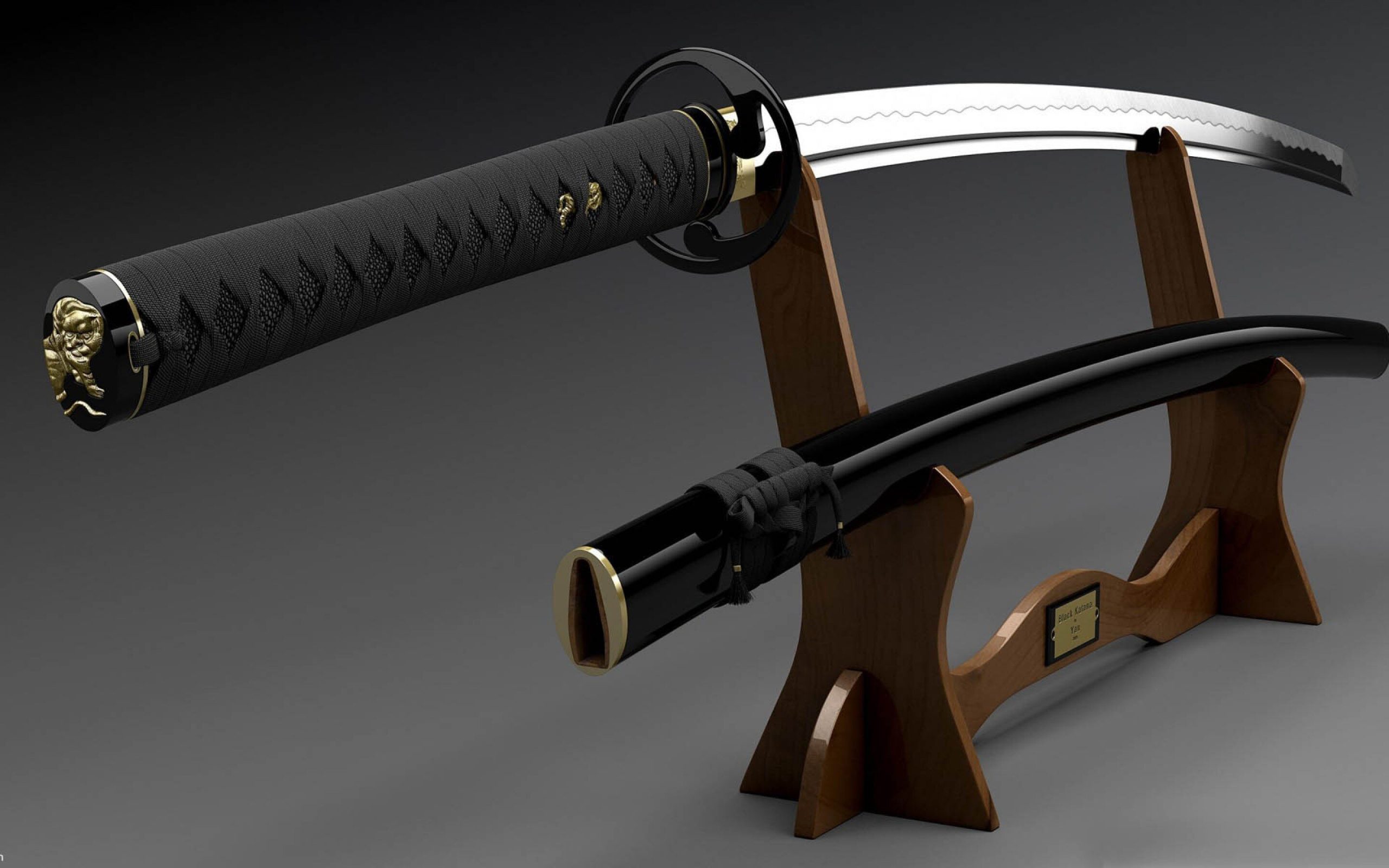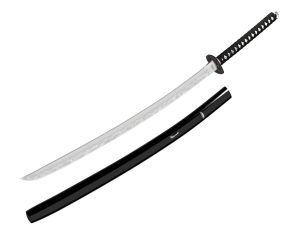Known the world over for its elegance and beauty as well as its versatility and power, the japanese katana sword is one of the most revered swords in history. Its unique design and cultural significance have made it a symbol of Japan to the point where it is considered to be an icon. It is a single-edged sword with a long curved blade. The curvature of the blade allows it to be used for both slashing movements common in mounted combat and thrusting moves required on foot.
The creation of a katana begins with the production of tamahagane, which is created from a mix of iron sand and charcoal in a traditional Japanese clay tatara furnace. The process takes days and nights of careful and meticulous work to produce steel of a high enough quality to become a sword. The steel is then tempered to improve its strength and flexibility.
Once the tamahagane has been properly tempered, the swordsmith then begins the intricate process of folding and forging the steel. The smith repeatedly heats and hammers the steel, folding it on itself in a process called “sunagashi” which creates thousands of layers within the metal and gives it a distinctive pattern. It also gives the blade its strength and durability. The smith must carefully and skillfully control the process to achieve the desired shape, a thicker back (mune), thinner edge (ha) with a curved tip (kissaki).
At this stage, the smith can choose the style of sword he wishes to create. A katana, for example, can have an okissaki (straight), chukissaki (curved) or even hooked backwards (ikuri-okissaki). It can also be longer or shorter in length than the standard 60cm; those with a blade that is longer are classified as Uchigatana and those that are shorter are referred to as Wakizashi.
After the forging is completed, the smith then removes the black taint from the steel by grinding it with a plane. It is then tempered again and finally polished to a smooth finish using straw ash and water.
The process of creating a katana requires tremendous physical strength as well as a great deal of patience and dexterity. It is an art that has developed over the centuries as much in response to stylistic and aesthetic considerations as it has to technical improvements. The smith must have a refined eye for the limits of his material and a keen sense for the beauty of a finished blade.
During the Heian period, the katana adopted Kissaki moroha-zukuri (double edged tip style) and became a weapon that was suitable for both slashing and thrusting by wristing. It was at this time that the katana started to gain a reputation as being a truly beautiful sword as well as a powerful and versatile weapon.Mini katana for sale



